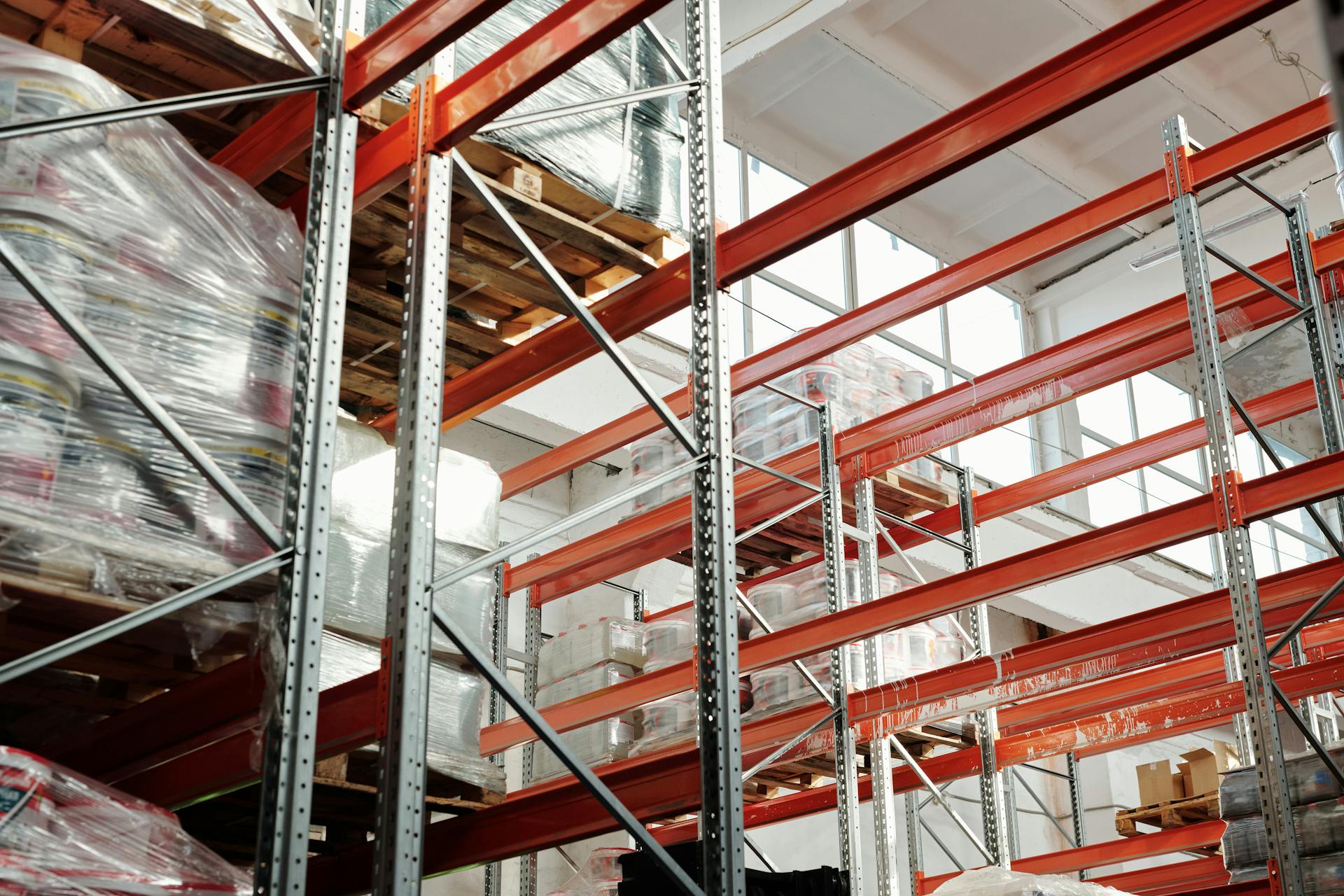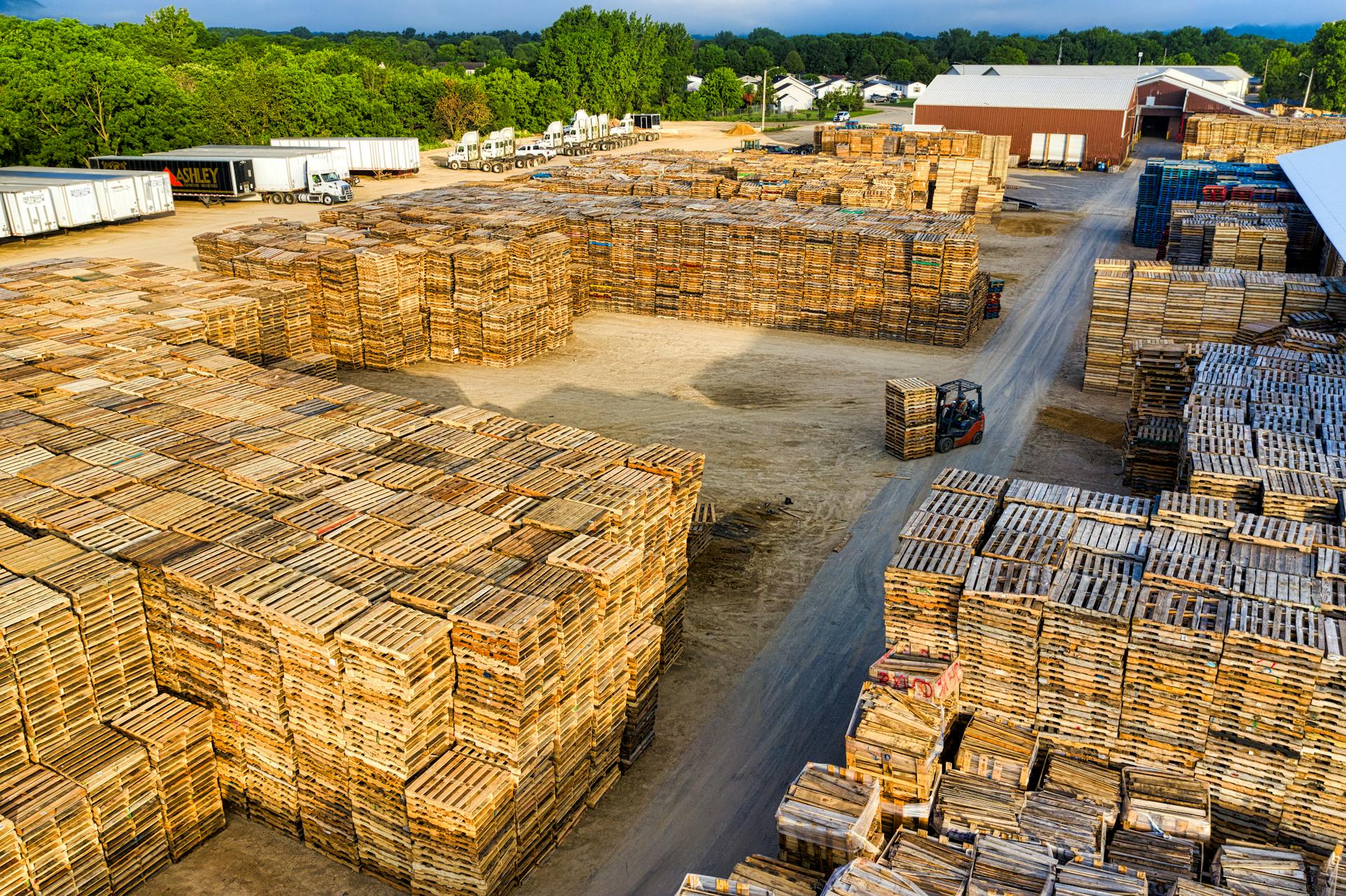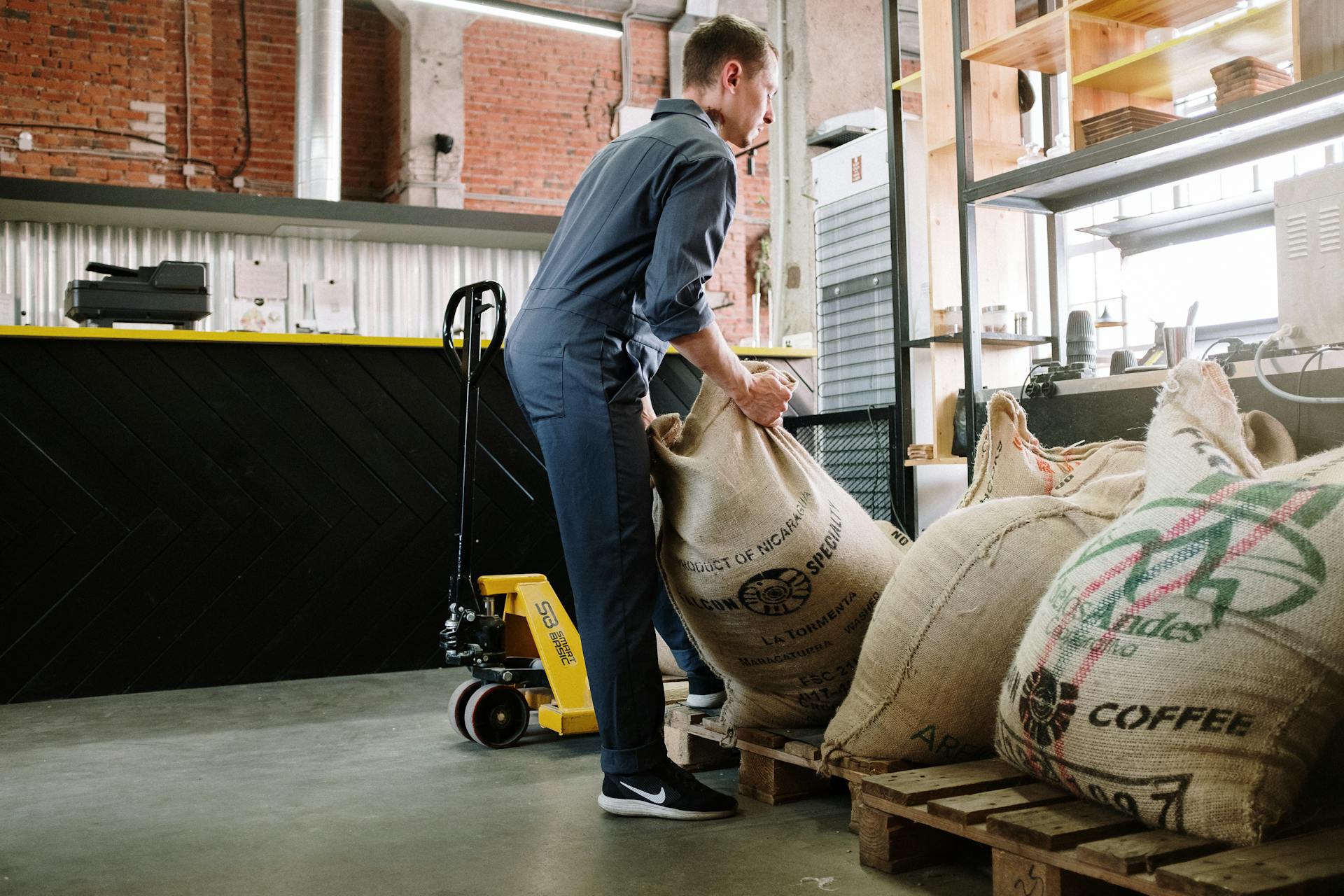
Pallets can be treated in various ways to prevent pest and decay issues.
Pallets treated with heat are typically marked with a stamp or label indicating the treatment method.
The most common treatment methods include heat, fumigation, and chemical treatment.
Chemically treated pallets may have a specific chemical residue that can be detected with a simple test.
Suggestion: Heat Treated Pallets Stamp
Identifying Treated Pallets
The International Plant Protection Convention (IPPC) regulates pallet treatments and stamps every pallet with a marking known as the “IPPC logo” if it meets certain standards.
This mark contains a code that tells you if the pallet was treated with chemicals or heat. The most important part of the marking is the treatment code.
Here's what you need to know about the treatment codes:
- MB: Indicates the use of methyl bromide for chemical fumigation. These pallets should not be used for any DIY or personal projects due to health risks.
- HT: Heat-treated pallets, which have been treated without chemicals, are safe for most applications, including gardening or furniture projects.
- KD: Kiln-dried pallets are another safe option, as they have been dried in a kiln without the use of chemicals.
To check for pallet treatment, inspect the pallet for both physical signs and the official treatment markings. If the pallet is not marked, it may be unsafe to use, as it is difficult to confirm how it was treated. If in doubt, avoid using unmarked pallets for indoor or personal projects, as they may have undergone chemical treatments that are not clearly labeled.

The IPPC logo and treatment code are stamped or branded directly onto the pallet, usually on one of the stringers or blocks. It includes the IPPC symbol (a stylized ear of grain), a country code (such as “US” for the United States), and a unique registration number assigned to the pallet manufacturer.
Checking Pallet Safety
Checking Pallet Safety is crucial before using them for projects or gardens. Always look for the IPPC symbol and treatment code on the pallet.
If the pallet is not marked, it may be unsafe to use, as it's difficult to confirm how it was treated. Avoid using unmarked pallets for indoor or personal projects, as they may have undergone chemical treatments that are not clearly labeled.
To identify pallet treatment, check for the IPPC Stamp, which contains essential information about the pallet's origin and treatment type. The treatment code "HT" or "KD" indicates the pallet is safe, while "MB" means chemical treatment.
Here's an interesting read: How to Build Furniture Out of Pallets

Here's a simple guide to identify pallet treatment:
- Look for the IPPC Stamp: This should always be your first step.
- Check the Treatment Code: “HT” or “KD” means the pallet is safe, while “MB” means chemical treatment.
- Inspect the Color and Odor: Greenish or glossy pallets may be chemically treated. Strong chemical smells are also a red flag.
- Ask the Supplier: If you're buying pallets, don't hesitate to ask your supplier about the treatment process.
- Avoid Unmarked Pallets: If a pallet is missing the IPPC mark, it's best to avoid using it for projects, especially those that involve food or human contact.
When Is a Pallet Still Safe?
If you're unsure about the safety of a pallet, it's always best to err on the side of caution.
Check for an IPPC stamp, which contains essential information about the pallet's origin and treatment type.
A national pallet, used for domestic transport within your country, is likely safe since most domestic pallets aren't treated with chemicals.
However, it's still a good idea to be careful and try to trace where the pallet came from.
You can also check with local businesses, like motorcycle dealerships, which often have pallets to give away.
Here are some things to look for in a national pallet:
- Heavy-duty lumber
- Oversized construction
- Brand-new condition
These characteristics suggest the pallet is safe to use, but always prioritize caution when working with used materials.
Don't Be Fooled by Appearance!
Pallets can look old and worn, but that doesn't necessarily mean they're not safe to use.

Cherry and oak wood pallets can have a dark stain due to the heat treating process, which releases sap from within the wood.
This stain can make the pallets appear old and worn, but it doesn't compromise their strength and durability.
In fact, heat-treated pallets are safe to use for projects, including raised bed gardens.
The treatment process involves heating the wood to a certain temperature, and there are no chemicals used on them.
If you're considering using an old pallet, look for the IPPC symbol and treatment code, which indicates that it was heat-treated.
Pallets from Canada are considered the safest for projects, as they've always been heat-treated and never used harmful chemicals.
So, don't be fooled by appearance – check the treatment markings and country of origin before using a pallet for your project.
Here's an interesting read: Are Chep Pallets Heat Treated
Understanding Treated Wood
Chemically treated pallets can be hazardous if inhaled or ingested, so it's essential to identify them before using them for projects. The International Plant Protection Convention (IPPC) regulates pallet treatments and stamps every pallet with a marking known as the “IPPC logo” if it meets certain standards.
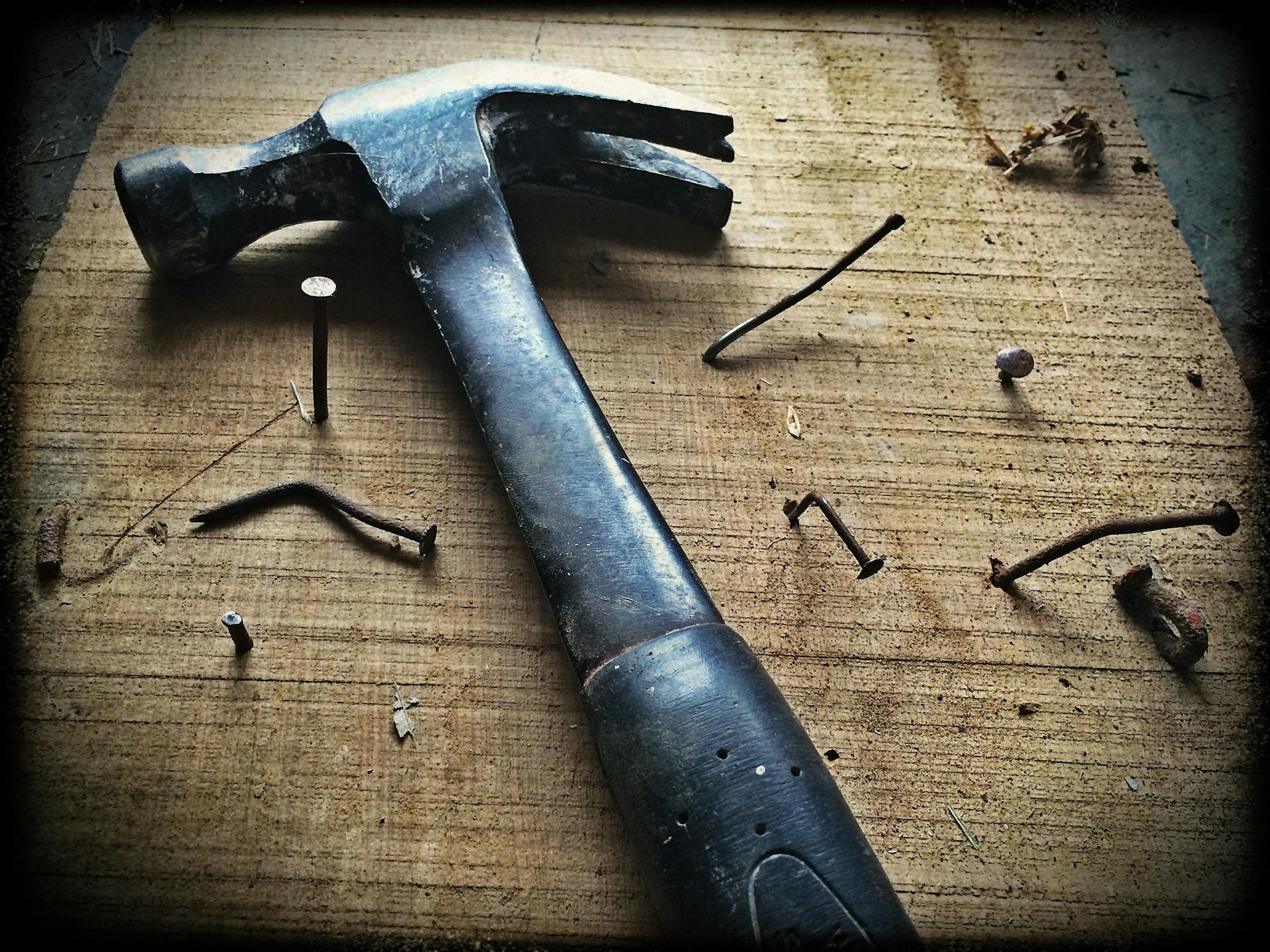
The IPPC logo contains a code that tells you if the pallet was treated with chemicals or heat. If the code is “MB,” it stands for methyl bromide, a chemical used to fumigate pallets. On the other hand, heat-treated pallets will display “HT,” indicating that no harmful chemicals were used during the treatment process.
If a pallet appears to be extremely smooth or glossy, it may have been chemically treated or coated. These are subtle cues to help you determine if a pallet is safe for repurposing. In contrast, untreated pallets generally have a more natural, rugged look and lack any noticeable odors.
Here's a simple guide to help you identify treated wood pallets:
Color Safety Concerns
Some pallets have a strong chemical odor, which can indicate the use of harmful substances.
Treated pallets may have a greenish tint or discoloration, suggesting exposure to chemicals.
Chemically treated pallets can be identified by their smooth or glossy appearance.
Untreated pallets, on the other hand, tend to have a more natural, rugged look and lack any noticeable odors.
Blue pallets are often from the pool industry and can contain chemicals, making them a no-go for repurposing.
Red pallets from PECO are a different story - they're made from high-quality lumber, kiln-dried to control infestation and moisture content, and regularly tested by an independent third party inspector.
Here's a rundown of the four main pallet pool companies and their colors:
It's worth noting that no chemical treatments or hazardous materials are used on PECO pallets (Red Pallets).
What Are Toxins?
Toxins in pallets can come from chemicals used to preserve the wood, such as methyl bromide, which is used to fumigate pallets.
Wooden pallets manufactured in Canada or the US may undergo a pest control treatment called heat treating (HT), which involves heating the pallet to a minimum core temperature of 56°C for softwoods and 60°C for hardwoods for a minimum of 30 minutes in a kiln.
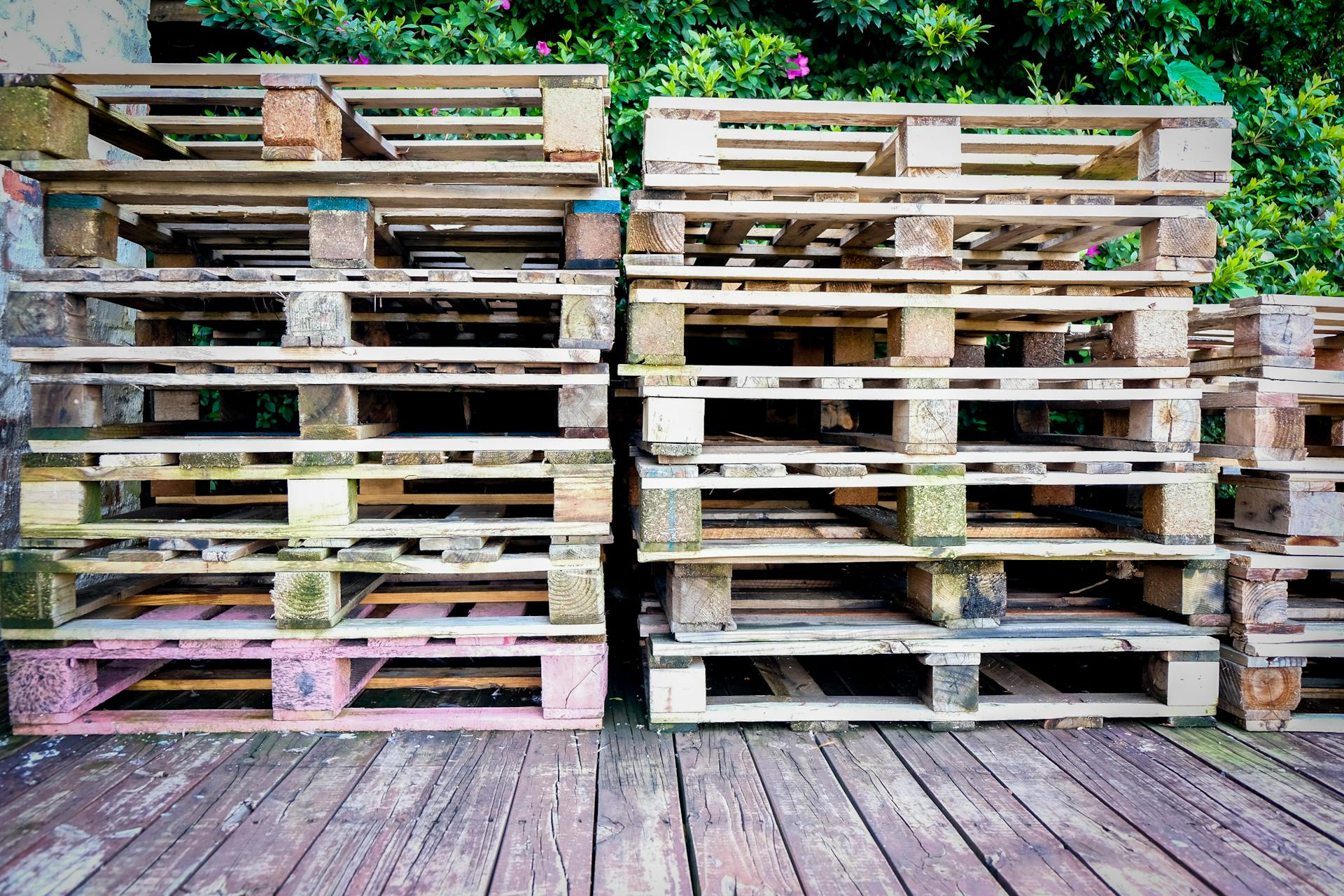
Heat-treated pallets are not harmful to your health, but other countries may use different treatments that can be hazardous.
Chemically treated pallets will display the code "MB", which stands for methyl bromide, while heat-treated pallets will display "HT."
The International Plant Protection Convention (IPPC) regulates pallet treatments and stamps every pallet with a marking known as the “IPPC logo” if it meets certain standards.
Pallets from countries with low chemical content, such as Canada and New Zealand, are a safer choice.
The color of the pallet can also indicate the type of glue used, with whiter pallets possibly containing formaldehyde.
The length of time a pallet has been stored in a humid area, like Brazil, can also affect its chemical content.
Sources
- https://aandipallets.com/how-can-you-tell-if-a-pallet-has-been-chemically-treated/
- https://diyprojects.com/know-safe-use-pallet/
- https://www.1001pallets.com/pallet-safety/
- https://thefrugalchicken.com/how-to-tell-if-your-pallets-are-safe-for-diy-projects/
- https://unakafp.com/how-to-test-wooden-pallets-for-toxins/
Featured Images: pexels.com
